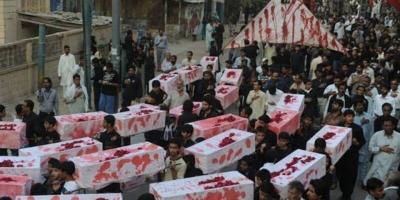Explore the causes and consequences of the recent Parachinar attack in Pakistan’s Kurram District. Learn about sectarian tensions, land disputes, and the ongoing security challenges facing the Shia community. Stay informed with the latest updates and solutions being proposed to end the violence.
Parachinar Attack
The recent violence in Parachinar, Pakistan, highlights ongoing issues of sectarian conflict and insecurity in the region. This article delves into the reasons, ongoing developments, and historical context surrounding the attacks, providing insights into their broader implications.
Causes of the Parachinar Violence
Sectarian Tensions
Parachinar, located in Pakistan’s Kurram District, has long been a flashpoint for Sunni-Shia sectarian violence. The Shia Muslim community, forming a majority in the area, faces recurrent attacks attributed to extremist Sunni groups, including factions associated with the Tehrik-e-Taliban Pakistan (TTP). These groups have been accused of attempting to incite fear and division, with the recent wave of attacks described as genocidal in inten
Land Disputes
Underlying land disputes have exacerbated tensions. Conflicts over property rights, coupled with the region’s tribal system, often lead to armed clashes. In the latest attacks, disagreements during negotiations over land reportedly escalated into violence
Regional Geopolitics
The district’s proximity to the Afghanistan border further complicates security. Militant groups often exploit the porous frontier to orchestrate cross-border activities. Pakistan’s government has repeatedly urged Afghanistan’s Taliban leadership to act against TTP sanctuaries within their territory
Recent Incidents and Developments
November 2024 Attacks
In one of the deadliest episodes, gunmen targeted passenger vehicles, killing at least 45 people and injuring 20. Women, children, and security personnel were among the victims. Authorities suspect sectarian motives behind the attack but have yet to identify the perpetrators
Ceasefire Efforts
Local authorities, aided by tribal elders, have attempted to mediate peace through jirgas (tribal councils). A recent ceasefire was brokered after prolonged clashes left 49 dead and 184 injured. Despite these efforts, violence often reignites due to the failure of enforceable agreements and the availability of heavy weaponry among tribes
Parachinar Today: Current Status and Challenges
The situation in Parachinar remains precarious. Security forces have increased their presence, but public trust in government efforts to protect vulnerable communities is low. The Shia minority continues to demand stronger action against militant groups and better protection measures【9】【10】.
Economic activity and mobility in the region are also severely affected, with key roads frequently closed due to unrest. Long-term solutions require addressing the root causes, including sectarian prejudice, tribal land conflicts, and regional instability【11】.
For further details on this crisis, you can refer to resources like Pakistan Today and VOA News.




